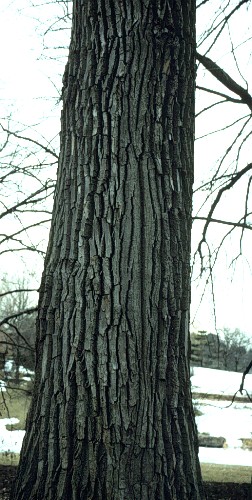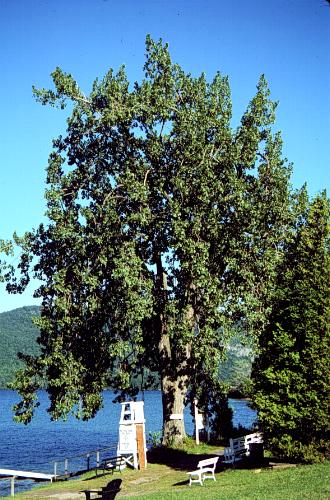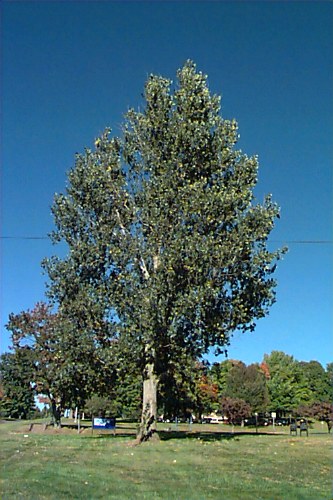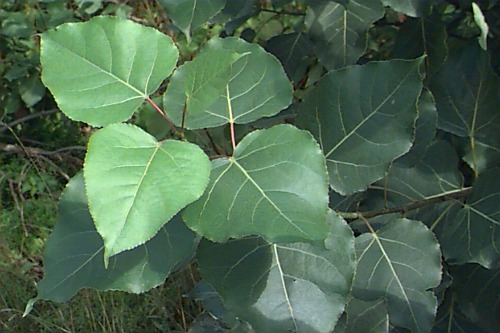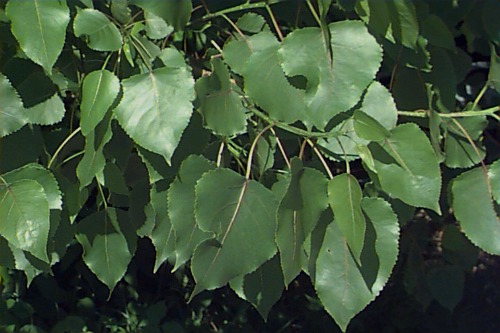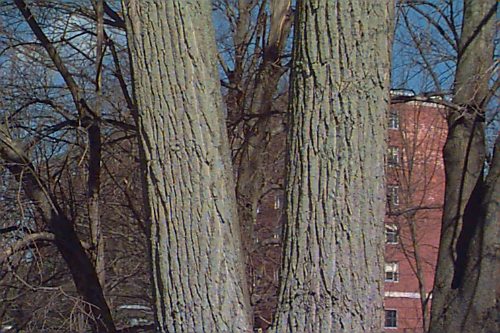Populus deltoides
Eastern Cottonwood, Eastern Poplar
Salicaceae
ExpandHabitat
- native to eastern North America
- hardy to zone 2
Habit and Form
- a deciduous tree
- wide spreading
- pyramidal in youth
- open, oval, irregular crown
- 80' to 100' tall
- 40' to 60' wide
- coarse texture
- fast growth rate
Summer Foliage
- alternate leaf arrangement
- simple, deciduous leaves
- lobed leaves with undulate leaf margins
- deltoid leaf shape
- toothed margins
- 2" to 5" long
- green leaf color
Autumn Foliage
- yellow fall color
Flowers
- yellow catkins
- before leafs out
- not ornamentally important
Fruit
- elongated capsule
- white, cotton-like ball
- 3 to 4 valved
- 0.25" to 0.33" long
- matures in June or July
Bark
- mature bark is deeply furrowed
- weak and brittle
- light, greenish brown color
- showy
- grayish, yellow stems
- stems are winged
Culture
- prefers wet soils
- full sun
- salt and drought tolerant
- transplant easily
- pH adaptable
Landscape Use
- lawn tree
- street tree when large spaces are available
- lumber
- good urban tree
- for shade
- for decoration from showy bark
Liabilities
- do not plant near sewers, septic tanks, drains or sidewalks
- suckers
- canker
- short-lived
- too many to name
ID Features
- imbricate, conical, .75" long, shiny brown terminal buds
- buds are resinous and pine-scented
- winged stems
- showy furrowed bark
- deltoid leaf shape
- toothed margins
- yellow catkins
Propagation
- by cuttings
- by seed
Cultivars/Varieties
'Siouxland' - The only widely available cultivar, this selection out of South Dakota grows quickly to form a pyramidal-rounded tree upwards of 70' tall. With age, it does appear to be susceptible to cankers and other diseases. As a selected male form, it is a "cottonless" cottonwood with no seed mess or errant seedlings. It also has a habit of losing its leaves over the course of the season. This plant is perhaps suitable for poor soil, wet soil and harsh climates.
